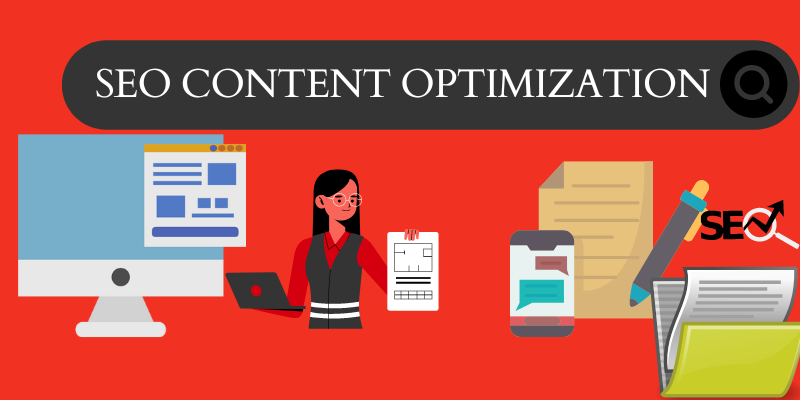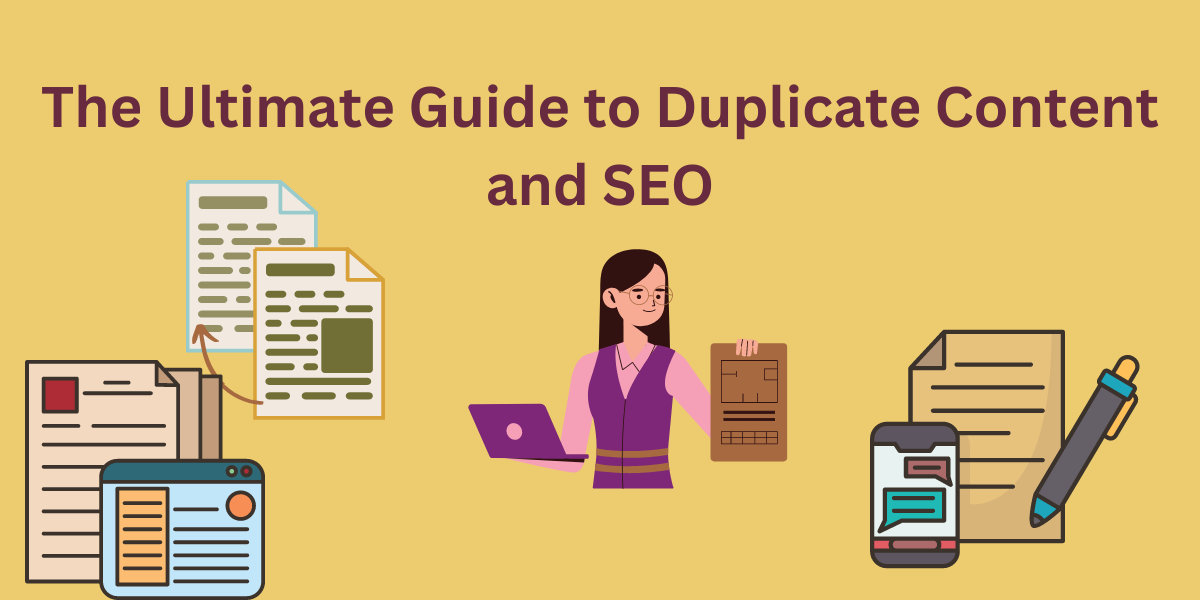- Home /
- Academy /
- Content & SEO Processes /
- SEO Content Optimization - A Guide to Achieving High Rankings
SEO Content Optimization: A Guide to Achieving High Rankings

Updating your website is critical to your success. The proper optimization of your existing content can increase organic and social media traffic while improving user experience.
Content optimization refers to updating your content (text, images, links, code, and other elements) to help search engine algorithms rank your web pages higher.
Including relevant keywords, readable copy, and appealing visuals are key. Optimize. Analyze. Repeat. Your content is never completed.
What is content optimization?
The process of updating on-page copy, images, links, and even code to help search engine algorithms rank your pages higher is known as content optimization. Finally, this assists your target audience in finding you. This is referred to as SEO content in the industry.

The more effective content will be more searchable for both Google and people.
SEO (search engine optimization) is a constantly changing field with hundreds of ranking factors.
However, one thing has remained consistent throughout its evolution: the importance of optimizing your content.
Indeed, search engines drive 300% more traffic to websites than social media. That is, the better optimized your content is, the higher you will rank in SERPs and the larger your target audience will become.
We will see everything we need to know about the best SEO content optimization strategy, high-quality content, and helpful ways to rank in this blog.
Why content optimization is important?
A successful content marketing strategy includes content optimization.
An effective SEO content strategy will boost your search engine ranking, increase your revenue, and help you establish yourself as an authority in your field. According to a SmallBizGenius study, more than 90% of businesses use content marketing strategies. Furthermore, 72% of marketers reported increased engagement with content marketing.
Content optimization also aids in the ranking of your content in Google's search results. The ranking algorithms used by Google determine which pages are the most valuable and relevant.
The first page of Google search results attracts 71% to 92% of web traffic, according to WordSream.
These statistics demonstrate how important it is to appear on Google's first page of search results. And content marketing and website optimization will get you there.
Content optimization benefits
Content optimization has a range of benefits. Optimized content, for example, will:
- Assist your page in ranking higher in search results (SERP).
- Assist your page in ranking for more keywords.
- Increase organic traffic to your page.
- Increase your click-through rate (CTR).
- Keep your site visitors' attention for a longer period.
- Increase the number of visitors who become leads.
- Boost conversion rates.
- Obtain more high-quality backlinks.
- Increase social media shares.
- Enhance the user experience.
- Create trust and authority.
As you can see, an effective SEO content strategy entails more than just writing content.
SEO content optimization tips
SEO and good content go hand in hand. You won't have much success with the other if you don't have one. Your SEO rankings and readership are likely to be low if you don't have the high-quality content that search engines want. At the same time, even the best content won't help you if your target audience can't find your website.
That is why it is critical to write SEO-friendly content that people enjoy reading regularly. With that in mind, here are a few pointers and best practices for producing high-quality content while improving your SEO.

1. Begin by conducting keyword research
The first step in SEO copywriting and content creation, in general, is keyword research. It is a crucial component of any successful content marketing and SEO strategy. Decide which keywords you want your content to rank for before you start writing. Investigate how your target audience finds relevant content by getting inside their heads. Consider what wording or phrasing they would look for and how it relates to your company. Then, as you write, use those exact terms.
2. Conduct keyword and phrase research
Then, brainstorm. Put yourself in the shoes of your audience and jot down some terms and phrases that may be relevant. For example, if you're writing about how to effectively market health and diet trends, consider what searchers would Google to find this information. Also, for inspiration, use Google or YouTube, as both platforms make suggestions as you type in their search bars. Another option is to simply type "Searches Related To..." and see what comes up. Similarweb can help you find more targeted phrases by researching which search terms your competitors are using to gain traffic. Similarweb's keyword generator can also be used to generate a list of keywords related to any seed keyword. This gives you ideas, and additional keywords to target.
3. Where should keywords be used for SEO content optimization?
Use your main keyword within the first 100-150 words as well as in headers to help search engines link your keywords to your content and deem it relevant. Of course, keywords should be used naturally throughout the text. The key word here is "naturally." Search engine algorithms penalize keyword stuffing. This is a common pitfall for marketers.
Remember that SEO should not jeopardize the uniqueness of your ideas or the readability of your text. Your goal is to use your target keywords enough times that search engines understand your page is truly relevant, not to use them as many times as possible even if they don't quite fit.
4. Improve your title tag
Make your title tag, also known as the meta title and page title, enticing and relevant to the rest of the content on your page to help your SEO ranking. To demonstrate relevance, use relevant keywords near the beginning of the title and avoid keyword stuffing. Your title should be between 50 and 60 characters long; anything longer will be cut off on the Search Engine Results Page (SERP). Each page must have its title.
5. Write attention-grabbing meta descriptions
A meta description is an important piece of content that appears alongside the meta title in search results. It is not a ranking factor. However, it is another opportunity to capture the attention of searchers. Remember that compelling content drives clicks. Take advantage of this opportunity to increase your click-through rate with a strong meta description.
Here are a few quick tips for writing an effective meta description:
- Write a compelling call to action that includes strong verbs like 'discover' or 'learn.'
- Give each page its meta description.
- Keep it to 155 characters or less to avoid being cut off by the SERPInclude your main keywords.
6. Create keyword-friendly headings:
H1 refers to the main heading of any piece of content. Your primary keywords should be included in your H1. It should also be closely related to the title tag and the page's main topic.
After all, it stands to reason that the title and heading of a page addressing a particular topic will also address that topic in its headers. The H1 introduces your page's main topic and directs the user experience. They emphasize the main points and provide structure to the content. As a result, having your keywords within those elements indicates to Google's algorithm that your website is also relevant for your target keyword.
H2 headers are used for the main subheadings, while H3 headers are used for the smaller headings. Secondary keywords should be included in both H2 and H3 headers whenever possible. The combination of short-tail and long-tail keywords in these headers will assist search engines in comprehending the structure and content of your page. It is worth noting that the order assists Google's algorithm in understanding the content structure and the value it provides users.
7. Include internal and external links for SEO purposes:
Don't undervalue the value of links. Include external and internal links to make your content appear credible. This can also help you position yourself as an expert on the subject, both to search engines and your target audience.
External links should point to credible, authoritative sources that back up the claims in your content. External linking establishes a relationship between your site and more established sites, so rely on well-known, reputable publications such as Forbes, Business Insider, Neil Patel, and others. Internal links direct readers to other related content on your website.
All links must have a valid UTM and open in a new tab so that the reader can access the additional resource without leaving your content. A short, easy-to-read URL that uses hyphens to separate your main keyword is ideal.
8. Make use of eye-catching images:
Strong images can pique people's interest and encourage them to read your piece. They may also result in social shares. That is why it is critical to include relevant, interesting images with alternative text (also known as 'alt text). Alt is a text description that is added to the HTML tag of an image on a web page. When a user moves their mouse over an image or when the image cannot be displayed, this message appears. Image Alt text optimization assists search engines in understanding what your images depict, which helps your content rank higher. Your alt text can be a full sentence describing the image and should also include your target keywords.
Conclusion
Search engine optimization is essential for content at any stage of your company's development. SEO content optimization is one of the most important aspects of digital marketing, whether you are just starting with optimized content or looking for more advanced methods to drive traffic.
To rank your website or page, you must have high-quality content that answers your reader's questions, is well-informed, and is full of fresh, up-to-date material.
If you're having trouble and need help determining where you can improve your content, consider scheduling a phone call with one of our SEO experts.
With so much content available online, you must create high-quality content to gain a competitive advantage.
Utilize these content optimization strategies to develop high-value content that attracts and converts visitors.
Don't overlook older content on your website. To increase traffic and conversions, return to these pages and implement these SEO content optimization tips.
Start using PagesMeter now!
With PagesMeter, you have everything you need for better website speed monitoring, all in one place.
- Free Sign Up
- No credit card required
Rank tracking is the practice of monitoring the rankings that your sites hold in search results for the search terms that interest you. A program that does rank tracking is called a rank tracker.

Content pruning is the process of taking out the content from the website that has very less value to the business or its clients.

In content marketing, duplicate content is content that is an exact copy of another piece of content.
Uncover your website’s SEO potential.
PagesMeter is a single tool that offers everything you need to monitor your website's speed.